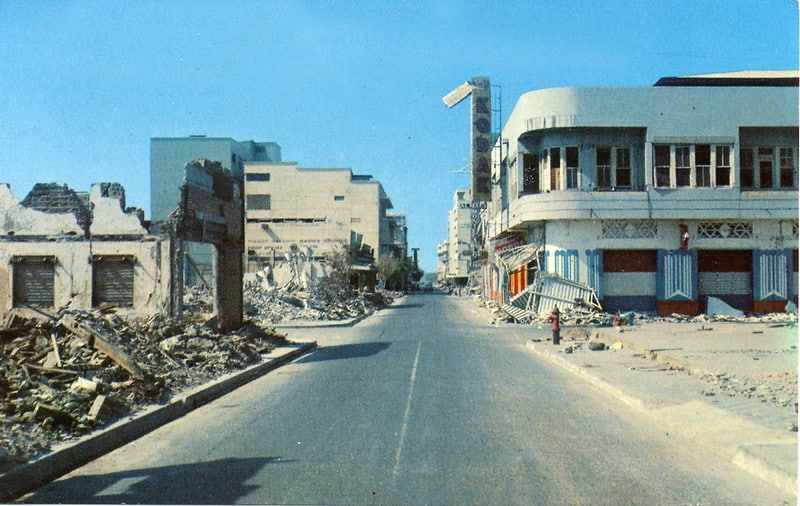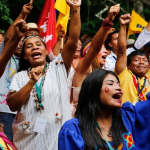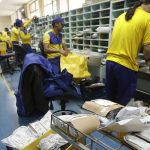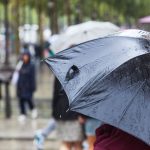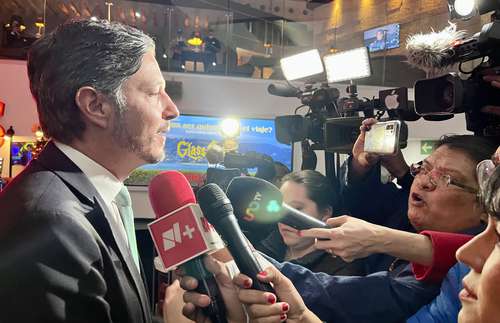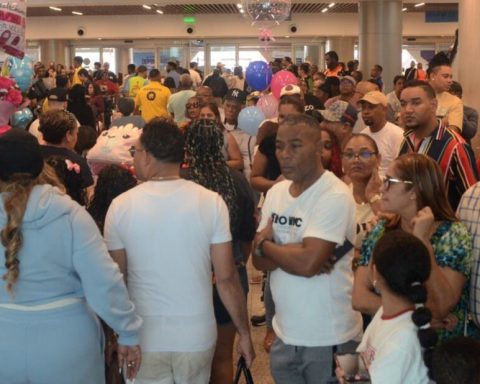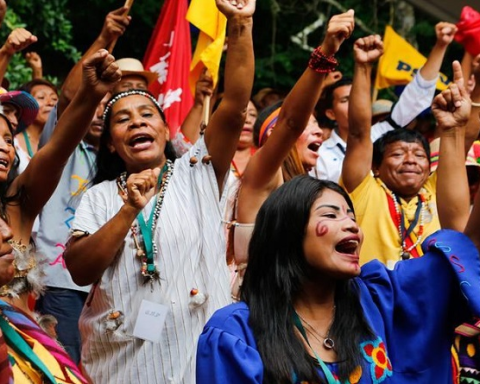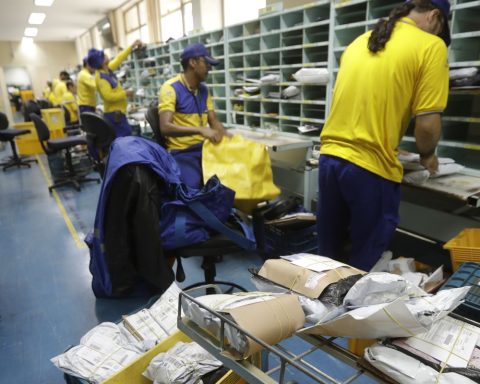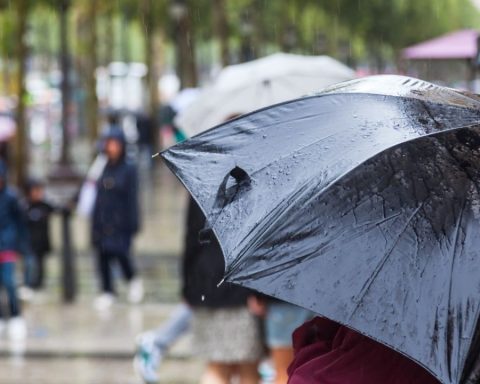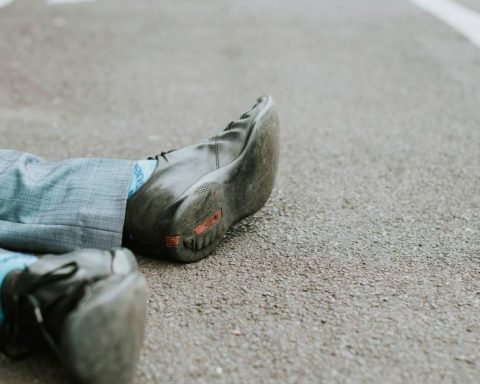The old woman Managua It is remembered by those who lived it as a city of human dimensions, welcoming and with a lot of cultural life. A Central American capital on the rise, which ended in rubble on the early morning of December 23, 1972, when it was shaken by an earthquake measuring 6.2 on the Richter scale. 50 years later, the damage caused by the earthquake is still present.
Roosevelt Avenue in old Managua. Photo: Courtesy/Nicolás López Maltez.
A city that captivated its inhabitants
The Nicaraguan historian Nicolas Lopez Maltez ensures that Managua was an orderly, clean and safe city. “Most people did their errands on foot. They all lived in love with their city”, she expresses nostalgically.
Roosevelt Avenue, formerly located in what is now the historic center of the city, was one of the busiest and most popular streets in the capital.
“It was a city that was surprising because of the number of cars and the bustle of commercial activity. Nicaragua came from decades of economic growth and at that time it was an economy in dynamic expansion, but modernizing”, explains the economist Enrique Saenz.
Part of this modernization was reflected in the new constructions, such as the Central Bank building and the Bank of America tower, inaugurated in 1964 and 1970, respectively. “With the banking center of Managua, a capital began to take shape that was comparable to any of the Central American capitals,” adds López Maltez.
For the civil engineer Agustin Jarquin Anaya, Managua was heading towards a “modern architecture”, but preserving quasi-colonial elements.
A developing Managua, built on an imminent threat.
“I lived Managua until the last day”
On December 23, 1972, the inhabitants of Managua prepared to receive Christmas. 12:35 AM: Deafening noise, buildings swaying, darkness, and complete silence.
Ilsen Canales was born in Managua six hours before the 1972 earthquake, in one of the Social Security hospitals. She and her mom were still in the building when the quake struck. “In the midst of movement and destruction, my mom managed to get to where I was. She managed to identify me by my bracelet and pulled me out of the rubble, ”says Canales, 49 years old. “She saved my triangle of life, when a cupboard fell between my crib and the wall,” she continues.
In 30 seconds, Managua was devastated. More than 60 percent of homes and buildings were destroyed. A little more than 10,000 people died, another 20,000 were injured and around 200,000 homeless were registered.
Ángela Saballos was a journalist for the newspaper La Prensa at the time. “There was no light, there was no water. It was a ghost town. It was an uninhabitable city ”, she recalls. She and her family took refuge for a few months in León. “Other people went to Masaya, to Matagalpa. All the people received us with great affection. We all came shaken by earthquakes, ”she narrates.

Photograph taken by historian Nicolás López Maltez hours after the earthquake. Photo: Courtesy/Nicolás López Maltez.
Why so much destruction?
“In 30 seconds, only Hiroshima, and Managua”, was the title of the first edition of the newspaper La Prensa in 1973, published on March 1. In the months following the earthquake, the country’s independent press dedicated itself to reconstructing what happened on the day of the earthquake and investigating the reasons behind the great damage it caused. Today, experts explain the fatality of that seismic event.
The main reason was that the construction systems of the time were very fragile and incapable of resisting an earthquake of such magnitude. Old Managua had inherited the taquezal constructions of old Managua, which had already suffered an earthquake in 1931.
“The buildings that did not fall were the new concrete neighborhoods, such as Linda Vista and Bello Horizonte,” explains Danilo Saravia, an expert in urban planning.
For López Maltez, it is unfortunate that the lessons of the 1931 earthquake had not been used to build more resistant and safe buildings. “There was a modern construction process, but there was no progress in the quality control of construction materials, nor were there sufficient seismology diagnoses,” says engineer Agustín Jarquín Anaya.
Although some buildings resisted, the center of old Managua disappeared, as did the desire for a prosperous city.
the ghost of the earthquake
The design of the reconstruction of Managua was affected by the corruption of the Somoza regime and land trafficking. The impact of internal political conflicts after the earthquake also made it difficult for Managua to recover from what happened in December 1972.
“Some economic and social standards resulting from the economic dynamism of the 50s, 60s, even after 50 years, we have not been able to reach them, and the most latent evidence is that we do not have a capital city, we have pieces of a city,” he explains. Saenz.
For Saravia, today Managua is a city that, unlike all other Central American capitals, does not have a center or a central avenue. “Managua is now an urban system made up of nuclei that are interconnected. It has had a mainly horizontal growth”, adds Saravia.
“Managua is now a very messy, dirty and insecure city,” says López Maltez.
Is Managua prepared to withstand another earthquake?
With the 1972 earthquake, it became clear that the center of the city of Managua was crossed by seismic faults, and Managua decentralization and development programs were created, with the support of the international community. Unfortunately, these plans have not been fulfilled.
Despite the modernization of construction systems in recent years, the lack of political will to supervise construction materials and processes, and corruption, expose Managua to destruction in the face of future seismic events.
“Over time, the enforcement of those building regulations has been relaxed. It is not necessary to be a fortune teller to realize that a good part of the constructions in Managua are vulnerable to earthquakes of similar magnitudes”, laments Sáenz.
